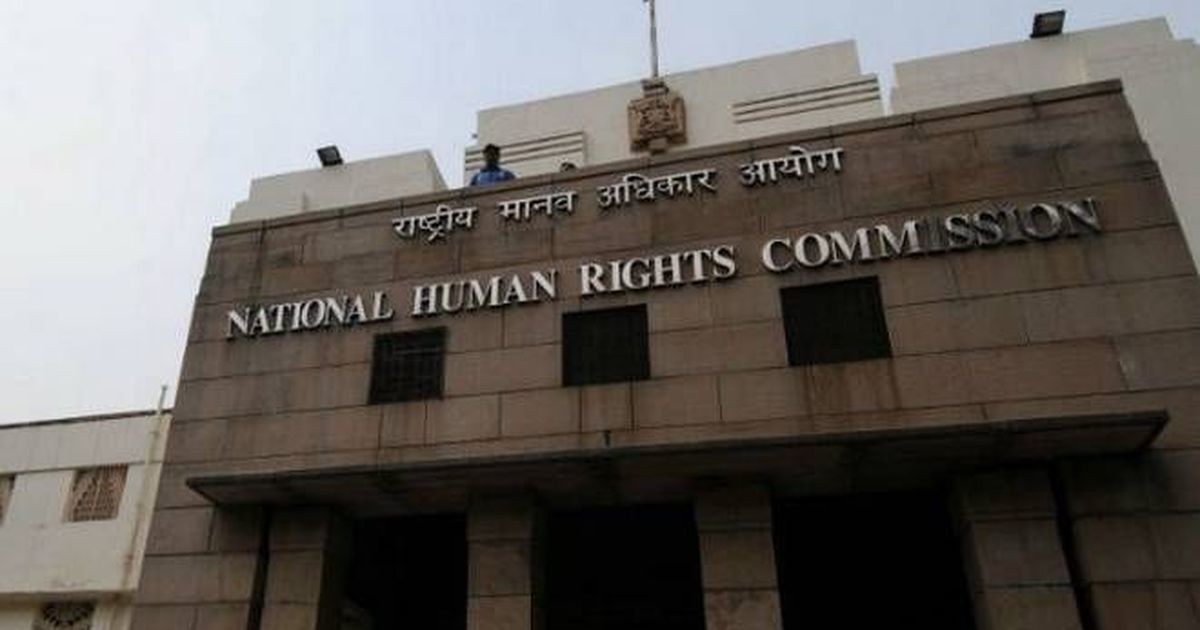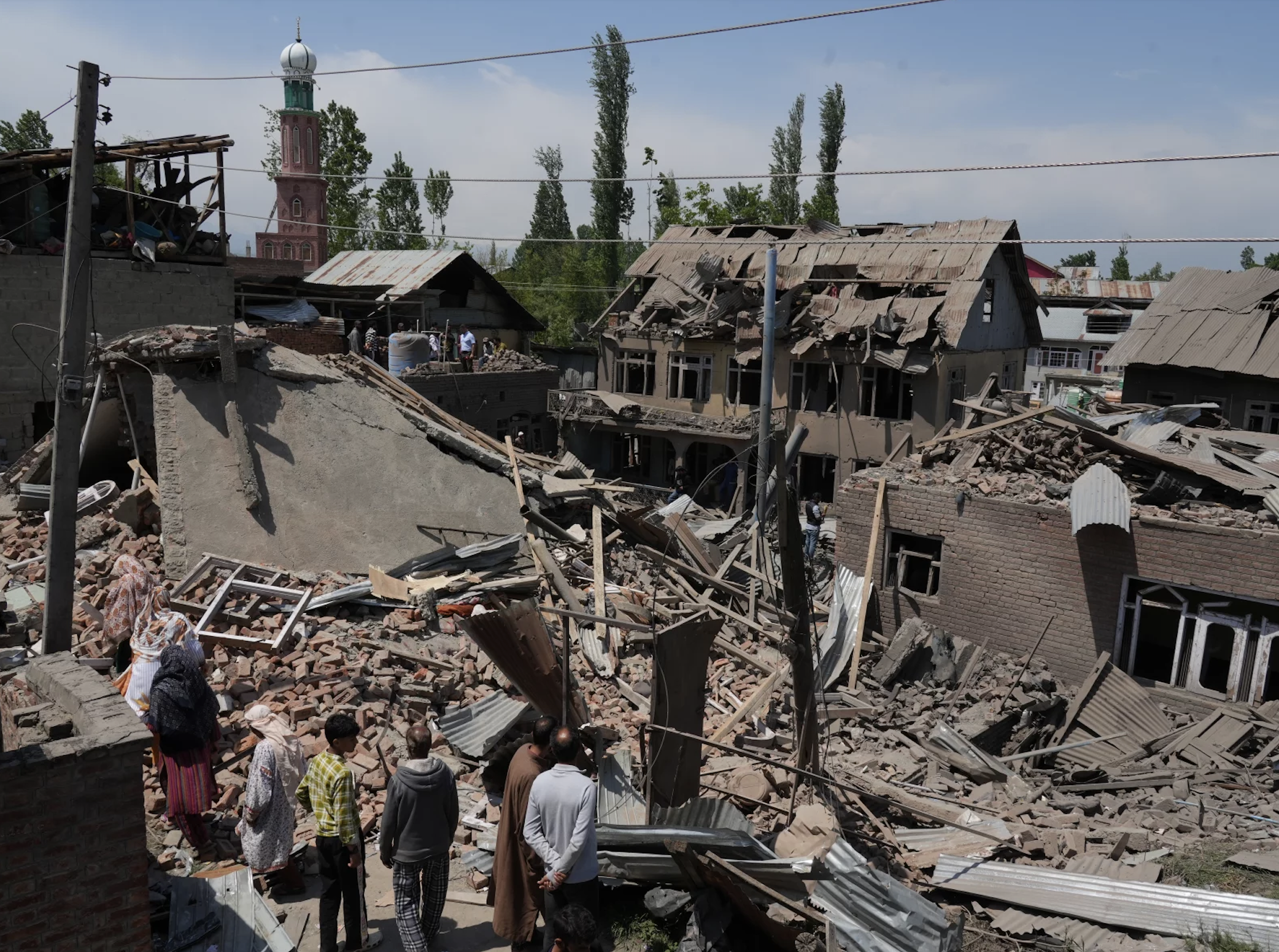
By Neha Dixit
Sarai Pohi (Azamgarh, Uttar Pradesh): On a winter afternoon, young men with floppy hair and old men with long beards surround a petite man in his late 30s in Sarai Pohi village in Azamgarh, a district in eastern Uttar Pradesh.
Mohd Javed was arrested for writing letters of love to his beloved in Karachi, Pakistan in 2002. In one of the letters, he drew a heart and inscribed J+M inside it. The police interpreted J+M, Javed+Monobina, as a code for Jaish-e-Mohammmed, a Pakistan-based terror outfit, and called him a member of its sleeper cell in India. He spent 12 years in a Rampur prison as an undertrial, was absolved of all charges and released in 2014.
“While I was in jail, the only person who raised a voice for my release, ran a campaign was Rajeev Yadav from Rihai Manch,” he says pointing towards Yadav, a man his age and an independent candidate from the Nizamabad assembly seat in Azamgarh.
Javed is one among the many star campaigners for Yadav, who speak about their incarceration and lack of political will to intervene in fake cases of terror against ordinary civilians.
‘Jahan aadmi, wahan Azmi (Where there is a human, there is an Azmi).’ This is a common saying for Azamgarh, which started witnessing large-scale migration almost a century ago. It is said that at least one member of each household works in the Gulf or Middle East. Azamgarh still does not have quality higher education institutions, industrial units or other employment opportunities to stop the migration. It is one of the 250 most backward districts of India.
Although Muslims form just 15% of the population of the district, the region has been at the receiving end of Islamophobia for the past decade and a half. It has been demonised by the media, Indian cinema and even the Hindu right-wing, by dubbing it a ‘terror factory’ to polarise votes on sectarian lines.
Yogi Adityanath, the current chief minister of Uttar Pradesh wrote an article – ‘Atank ka gadh, Azamgarh (Terror hub, Azamgarh)’ – about how he survived an alleged murderous attack in the district in 2007.
In 2008, two students – Atif Ameen and Mohammed Sajid – were shot dead in encounter and another person, Zeeshan, was arrested by the police in the Batla House case in Delhi on charges of terror. All three were from this area.
The Batla House encounter was debated and heavily contested by human rights activists and lawyers. The authenticity of the incident is mired with complicated questions till date. In fact, in 2016, the police claimed that Mohammed Sajid did not die in the encounter but fled and later joined ISIS. This is also heavily debated, since the police could not provide any proof.
In line with global Islamophobia, heightened after the 9/11 attacks in the US, this was the time when the Indian police and state agencies were desperate to ‘root out Islamic terror.’ After the Batla House encounter, the Lucknow Bar Association took a call that none of its lawyer members will take up cases of terror accused.
According to a Supreme Court ruling, Article 21 of the constitution entitles prisoners to a fair and speedy trial as part of their fundamental right to life and liberty. However, a significant number of undertrials are from socio-economically deprived backgrounds and have no access to legal aid. This hampers their ability to defend themselves in court and they end up spending long stretches in jail.
This is when Rihai Manch was formed. It was headed by Mohd Shoaib, a senior advocate in Lucknow. He was brutally assaulted by fellow lawyers within court premises for defending several terror accused.
Rajeev Yadav, a young journalist who grew up in Azamgarh, and as a student leader raised issues of communalism and human rights in the Poorvanchal region, joined Shoaib. Yadav had earlier dipped his toes in activism as a member of the People’s Union of Civil Liberties. He is now the general secretary of the organisation.
Azamgarh was at the centre of global terror conspiracies. In 2008, two young men from Azamgarh were detained by the police. They allegedly hung them upside down and beat them up in order to find out their links with terror outfits in Kashmir. The police asked, “Tell us the names of all the Kashmiris you know!”
They replied, “Farooq Abdullah, Omar Abdullah.” The then chief minister of Jammu and Kashmir and his son. They were thrashed more for this answer.
Yadav points out the silliness of such operations that still continue, “If tomorrow, a person from rural UP, who has not seen the world at all, is asked to name someone from America, they will say Donald Trump and Barack Obama, because those are the only people they have heard of from America in the media.”
The two men were released a week later, following Rihai Manch’s intervention.
“Azamgarh was the scapegoat, and poor, uneducated young men from the city were repeatedly used as fodder by the police,” Yadav says.
Till date, Rihai Manch has managed to get at least 17 people absolved of such cases and released from jail through legal aid, advocacy, protests and media campaigns. This is a no small feat, since the National Crime Records Bureau prison data for 2015 suggests that over two-thirds of all jail inmates in India are undertrials. Over 55% of undertrials across the country are either Muslims, Dalits or tribals; their share among undertrials is clearly disproportionate to their population.
Over the past 14 years, Yadav has been beaten up in public protests and detained for raising questions on fake encounters in Gujarat and UP, arrests of several people in the Akshardham temple attack and organising meetings on the 1984 Hashimpura massacres, Muzaffarnagar riots and the Citizenship Amendment Act. He has been called ‘Pakistani agent’, ‘anti-national’, ‘terrorist’ – labels given to all those who question the establishment in today’s India.
In the last five years of the Yogi Adityanath government, the UP police has killed 151 people and injured in 3,196 in police shootouts, known as police encounters in popular parlance. Almost all of them are undertrials, nearly 40% of them are Muslims, and the rest are from Scheduled Castes and Other Backward Classes.
Investigations reveal how the killings were pre-planned and targeted instead of chance encounters where the police fired in self-defence.
Out of these, 13 people who were shot dead or injured in police encounters were from Azamgarh. Only two of them are Muslims, the rest are either from the SC or OBC communities. Though Azamgarh’s Muslim population has been stigmatised, the district has a large Dalit and OBC population.
Bhim Sagar, a young Dalit man from Azamgarh, was a victim of what is now called a ‘half encounter’. In these situations, the police shoot a person’s leg, causing grievous injury.
Sagar had a bullet injury in his leg which wasn’t treated in the prison. As a result, his leg had to be amputated. Many victims of such police encounters have lost limbs in a similar manner.
“Such is the stigma of police encounters in Azamgarh that no politician paid a single visit to the encounter families. Such issues of civil liberties are no longer part of electoral politics,” says Banke Yadav, a Dalit rights activist from Azamgarh.
This is the reason why Rajeev Yadav turned from activism to politics and decided to contest the 2022 Uttar Pradesh assembly elections. “These questions must be raised in the Parliament,” he says.
Nizamabad has been a secure seat for the Samajwadi Party for years. The party has often portrayed itself as protector of secular politics. The constituency has 2.9 lakh OBC, Muslim and Dalit votes.
According to the UN, every third Dalit and Muslim in India is poor. Nizamabad is produces good quality jackfruit, red chillies and over 36 types of mangoes. But with no aid, farmers are quitting and moving to other professions.
“Even when Yogi Adityanath formed the Poorvanchal Vikas Aayog, a commission to raise the socio-economic indicators of the area, much remains unchanged,” says Yadav.
According to official data, there are 38 lakh migrant workers from Poorvanchal, many of whom walked back home in the 2020 COVID-19 lockdown. “Many from Dalit and OBC community have returned to bigger cities for lack of employment locally and the growing dominance and oppression of upper-caste Thakur groups like the Karni Sena,” says Mohsin Ahmed, a local activist.
This has emptied village after village in the area. During the campaign, we only see women and children left behind.
Similarly, even though Azamgarh has high number of cancer cases every year due to contamination of ground water because of arsenic, there is not one single cancer hospital in the city. “It has not been on any political party’s agenda ever,” says Yadav.
It is evening in Sanjarpur village. Pictures of Shahid Azmi, a celebrated lawyer from Azamgarh who was gunned down in Mumbai for defending terror accused, and Dr Bhimrao Ambedkar adorn the table. There is a power cut, it is dark. R.P. Gautam, a Dalit rights activist who was arrested during the 2018 nationwide protest against the dilution of the Scheduled Castes and Scheduled Tribes (Prevention of Atrocities) Act, says, “You can take a look at Rajeev’s work on Google, Youtube, Instagram, Twitter.” The young men quickly start scrolling online. The area is illuminated by the light emanating from the smartphones.
The Election Commission has prohibited public rallies for election campaigns because of the COVID-19 pandemic. Only door-to-door and virtual campaigns are allowed, putting candidates with deep pockets at an advantage.
“We don’t have money but our work speaks for itself. We are relying on word-of-mouth publicity and the trust of the people,” says Yadav.
In the last few years, at least six people have been sentenced to life imprisonment on terror charges from the village and neighbouring areas. The UP police and Anti-Terrorism Squad (ATS) has also made several arrests of Muslim young men from the city as part of their official ‘deradicalisation’ project. Hundreds continue to languish in jail on unproven charges of terror.
The village is desperate to shun the terror stereotype associated with it. “Please don’t talk about terror charges. We don’t want any justice,” an old man interrupts Yadav as he speaks about Rihai Manch’s work.
Yadav responds, “Issues of fake terror charges, police atrocities, human rights violation are not Muslim issues, they are constitutional issues which are the same for all Indian communities.”
In the recent past, many Indian activists have contested elections. While Dalit rights activist Jignesh Mevani won in Gujarat, Irom Sharmila, who sat on a 16-year hunger strike against the Armed Forces (Special Powers) Act in the Northeast, and Medha Patkar, who protested against displacement of people from their indigenous land for three decades, lost elections.
Yadav is undergoing the same litmus test of vote bank politics divided over caste and religion, against a feudal patriarchal background.
“In the current elections, many people are saying ‘Let’s not raise Muslim issues’ or else it will polarise the votes on communal lines. We didn’t raise the Kashmir issue enough and now the entire country has become like Kashmir, a prison with no human rights,” he says.
“The trajectory of Azamgarh is the trajectory of ‘New India’. In the earlier political narrative, only Muslims were criminals. Now Dalits, OBCs and even farmers are terrorists. This has to be challenged.”
The older people remain quiet. But the young men start clapping and join Yadav in a march across the village.
This story first appeared on thewire.in





